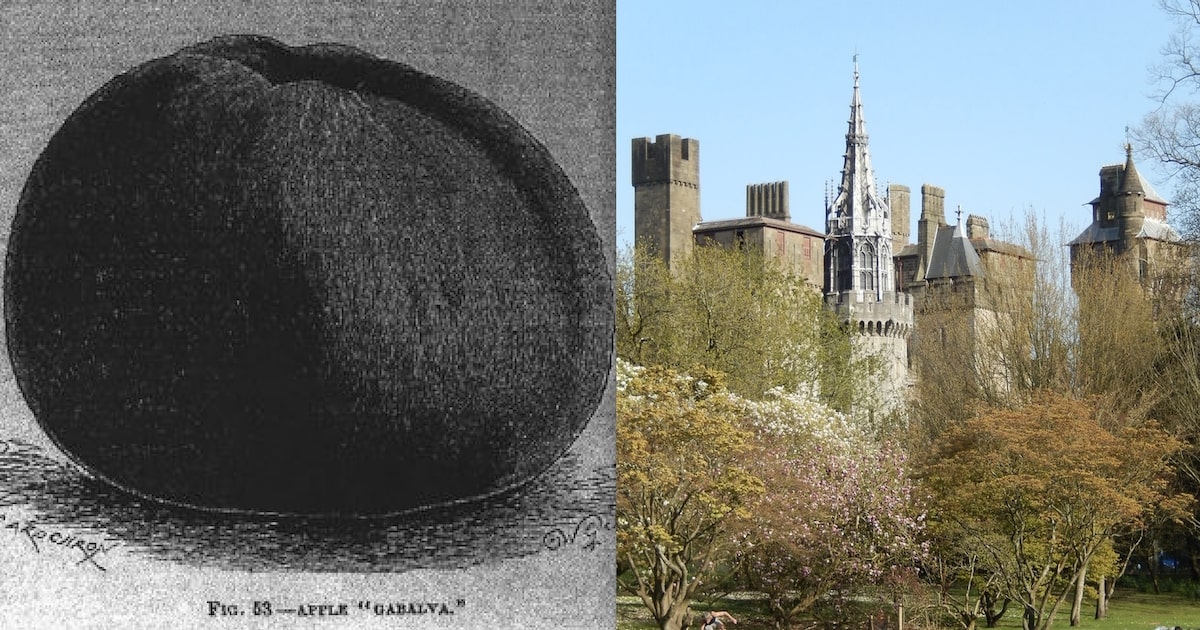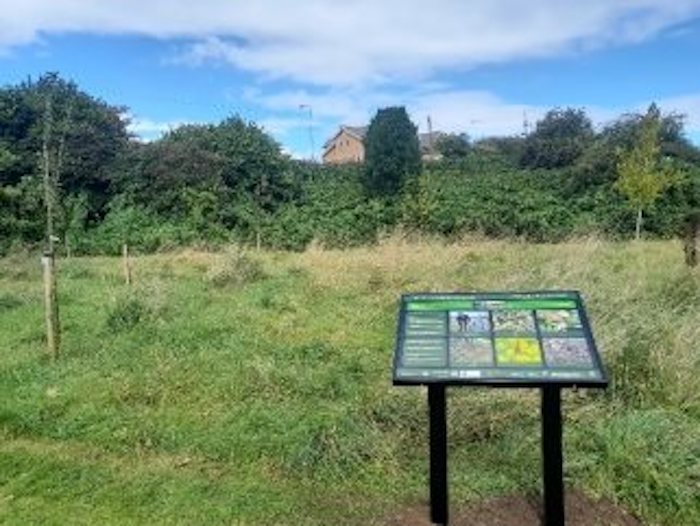Rare ‘Gabalva’ apple trees to be reintroduced to Cardiff

A rare species of apple that once grew in the grounds of the Bute family estate in Cardiff is to be reintroduced to the city for what is thought to be the first time in around 100 years.
Fifty Gabalfa apple trees, recorded historically as ‘Gabalva’ apples, will be planted in Gabalfa Park, Maitland Park, as part of the Bute Park Community Orchard, and on school grounds, as part of Cardiff Council’s ‘Coed Caerdydd ‘urban forest project. In total, with the help of community volunteers, the project aims to plant at least 30,000 new trees across 185 different sites in Cardiff during the 2024/25 tree planting season.
The last record of Gabalva apples in Cardiff’s green spaces dates back to the time of renowned horticulturalist Andrew Pettigrew, who was Head Gardener to the 3rd Marquis of Bute from 1873 to 1901, who described three trees of this variety growing in the grounds “here at Gabalva” as being “about 35 feet high, with trunks thicker than a man’s body.”
The lost variety of apple was rediscovered in Carmarthenshire in 2004 and has since been included in the National Fruit Collection, part of an international programme to protect plant genetic resources for the future.

According to an issue of the Gardener’s Chronicle published in the Pettigrew era, this variety of apple was “sufficiently good for a late dessert apple” and a “very valuable one for culinary purposes in the early months of the year” but even in the Victorian era, they appear to have been rare, with Pettigrew talking of how he had “shown specimens of the fruit to good judges at different times, but none of them knew it.”
Cabinet Member for Culture, Parks and Events, Cllr Jennifer Burke, said: “Being able to reintroduce this taste of history to Cardiff’s green spaces is really quite special.
“Primarily, Coed Caerdydd is about supporting nature, helping clean the air, and tackling climate change and as part of our One Planet Cardiff strategy, but we know residents are keen to see more fruit trees planted as we continue to expand Cardiff’s tree canopy.”
“Joining the 50 ‘Gabalva’ apples will be 450 other fruit trees including more varieties of apple, as well as pears, plums and cherries. We’ll also be planting 200 new street trees and two kilometres of hedgerow as we work with an army of incredible community volunteers to add to the 82,000 new trees that have been planted across 24 hectares of land – an area the size of just over 25 Principality Stadium pitches – so far.”

The council say that not only are orchards useful and beautiful, they are also important for wildlife with spring blossoms providing an excellent nectar source for many insects such as bees, hoverflies and moths. Later in the year, windfall fruits feed invertebrates, birds and mammals. Fruit trees also provide important nesting opportunities and contribute to vital ‘dead wood’ habitats.
Regular community tree planting sessions will be held at locations across Cardiff between now and April 2025.
To volunteer to help plant trees in your area click HERE
Support our Nation today
For the price of a cup of coffee a month you can help us create an independent, not-for-profit, national news service for the people of Wales, by the people of Wales.





Why are there a half dozen click baits above this?
Background: Ian Sturrock (Bangor) has been promoting Gabalfas for years, also Denbigh Plum (now in my garden) and dozens of Welsh fruit plants. My daughter (Pentrebane) has a Galbalfa like many in Cardiff.The apple culture is great and includes Wales. Shout out for the St.Dogmaels crew who were in at the beginning/revival, Welsh Cider & Perry people too. Two questions for Cllr.Burke (1) The money for this was part of the Block/Lottery Grant which came down the M4, not controlled by Wales, right? (2) Who is going to prune and feed these trees and collect the fruit for eating/juice/cider in years… Read more »